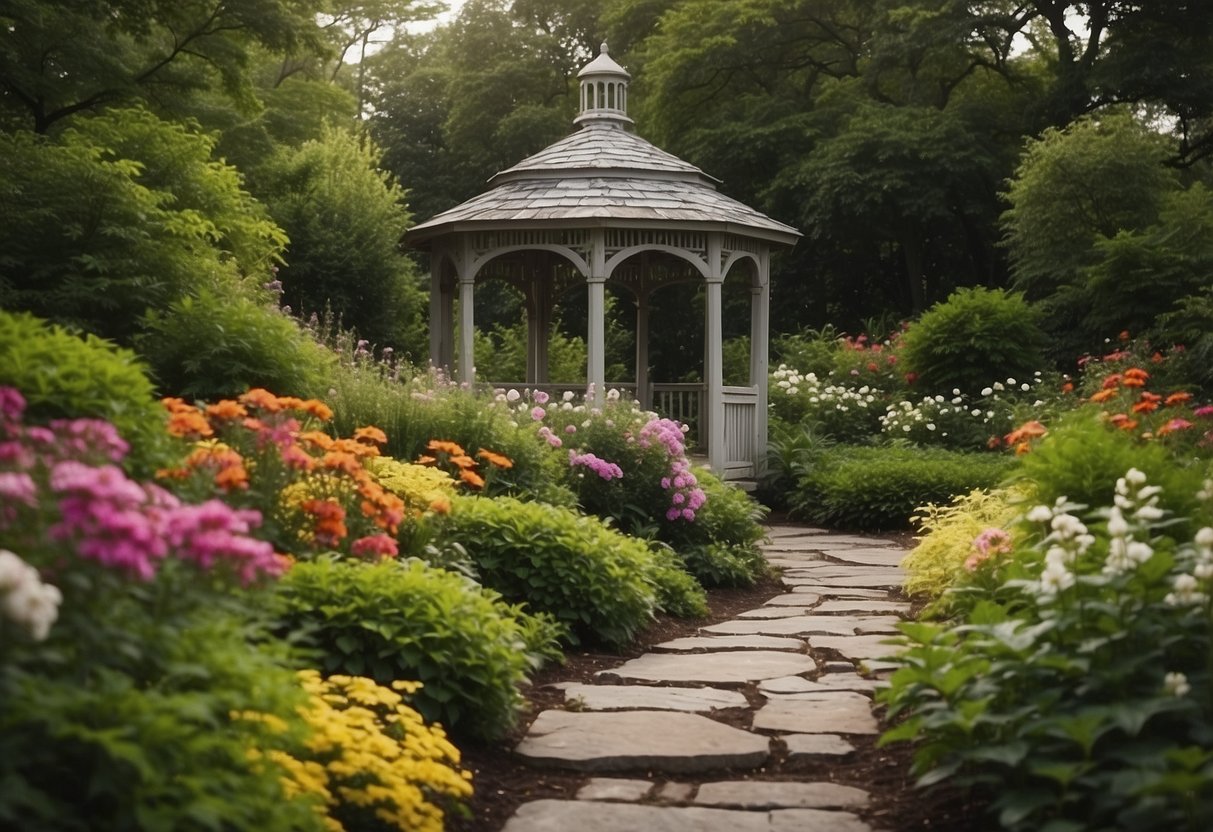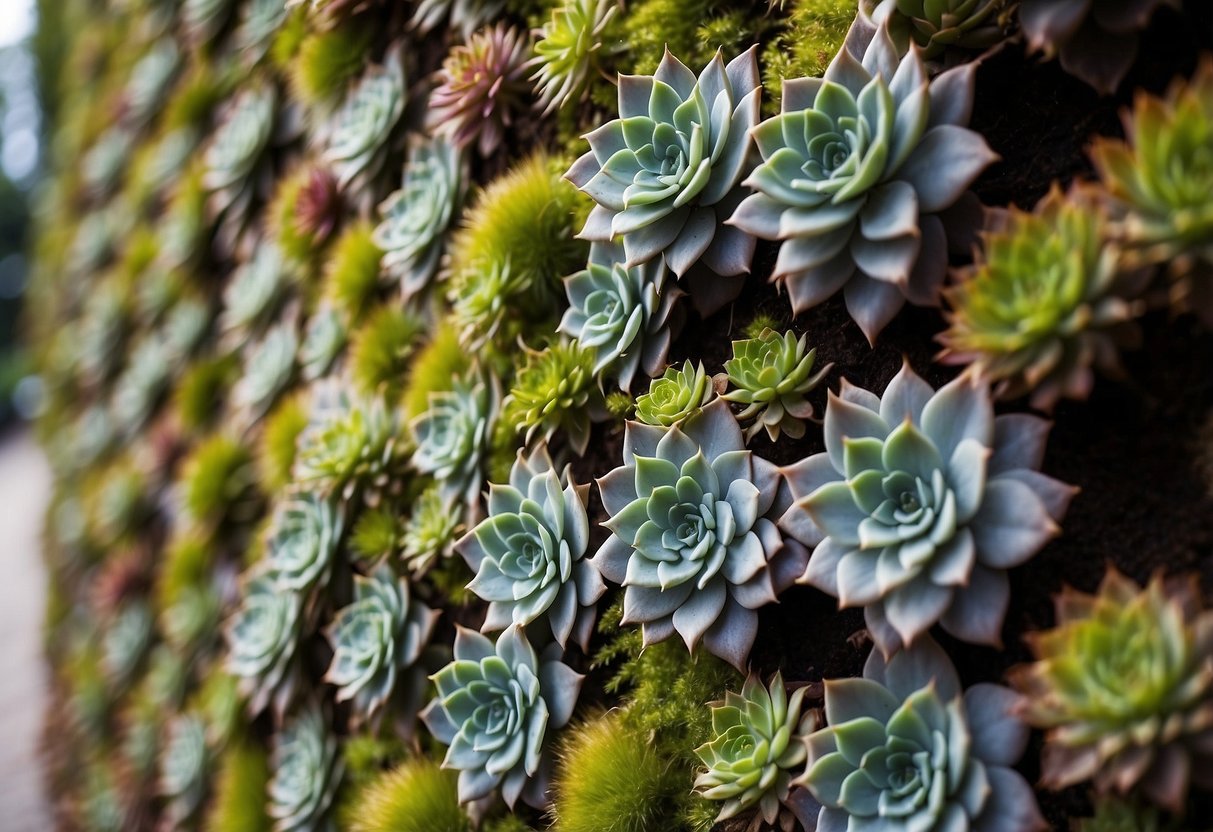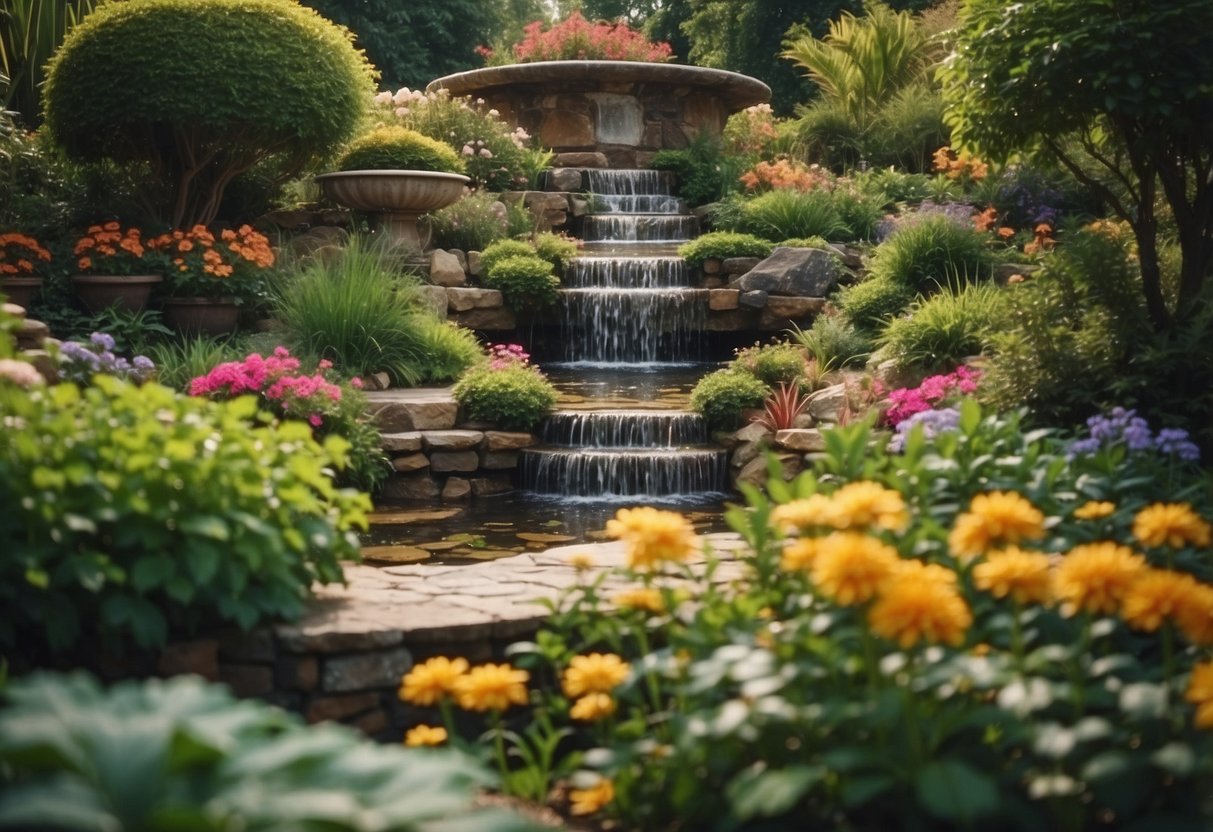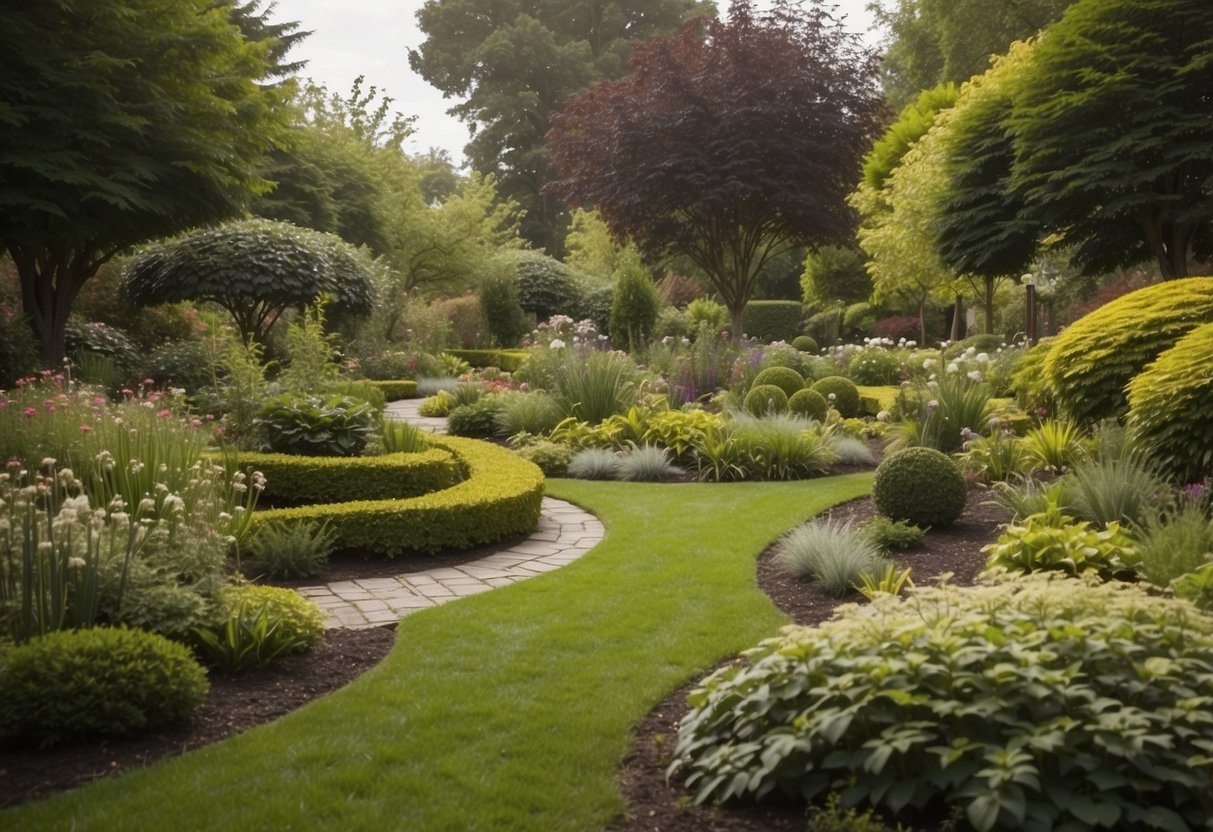Garden Elevation Ideas: Transform Your Outdoor Space with Style
Transforming a flat garden into a dynamic and visually appealing space can be both fun and rewarding. You might want to add depth, dimension, or simply create a unique focal point that stands out. With various garden elevation ideas, you can turn your yard into a multi-layered landscape that feels both inviting and vibrant.

There are many ways to give your garden a fresh new look by playing with different heights and levels. Whether you’re interested in raised beds, terraced slopes, or decorative mounds, there are plenty of creative options to explore. Each idea caters to different styles and preferences, ensuring that you’ll find something perfect for your outdoor space.
1) Vertical Gardens with Succulents

Vertical gardens with succulents are a great way to add greenery to small spaces.
You can transform wood shutters into vertical planters and fill them with soil for easy growing. Another idea is to create a cactus cut-out vertical garden, which doubles as art and greenery.
Adding planters to a wood slat wall can also elevate your space.
These designs not only save space but also provide a stunning visual element to your home. Get creative with your vertical succulent garden and enjoy the beauty it brings.
2) Terraced Flower Beds

Terraced flower beds add depth and height to your garden. By building different levels, you can showcase various plants more effectively. You can use colorful flowers to highlight the steps.
Choose plants that thrive in the unique conditions of each level. For instance, place sun-loving plants at the top and shade-tolerant ones at the lower levels. Use a variety of flowers to create visual interest.
Incorporate materials like stone or wood to build the terraces. This not only helps with structure but also enhances the garden’s look. Consider using colors and textures to make each level stand out.
3) Garden Arbor with Climbing Roses

A garden arbor with climbing roses can add a touch of elegance to your backyard. The roses climb up the structure, creating a stunning visual display.
The arbor provides support for the roses, helping them reach their full potential. You can choose from various designs, such as domes or tunnels, to match your garden’s style.
Adding an arbor with climbing roses can also create a lovely shaded area. This is perfect for a cozy seating spot in the garden. Check out some arbor ideas to inspire your creation.
4) Hanging Planters for Small Spaces

Hanging planters can save a lot of space and add greenery to your home.
You can use them in patios, balconies, or even inside your home.
They are great for flowers, herbs, and small vegetables.
Use sturdy hooks and ensure they are securely fastened.
Consider DIY options like repurposing old containers or macramé hangers.
For more ideas, check out these vertical garden planters.
5) Stone Garden Pathways

Stone garden pathways can bring a unique charm to your outdoor space. They are durable and blend naturally with greenery. You can choose from various styles to match your garden’s theme.
For a rustic look, use irregularly-shaped stones. This design, as seen in the Zen Garden, is simple and charming.
If you prefer a polished appearance, consider a flagstone pathway. The combination of large stones with small pebbles creates a natural yet refined path.
For those who like simplicity, spaced-out stones laid into the lawn can be a great choice. This design, mentioned by Bob Vila, is distinctive yet easy to install.
6) Multi-Level Water Features

Adding multi-level water features to your garden can make a big difference. They add movement and sound, making the space feel more lively. You can install a small fountain on a higher level, with water cascading down to lower pools.
Waterfalls are also an option. These can run from the top tier to the bottom, creating a soothing sound as the water trickles. It’s easy to integrate plants and lighting along the water’s path to enhance the effect.
For some ideas, check out this fountain design that features a stone basin.
7) Raised Vegetable Beds

Raised vegetable beds are a fantastic way to grow your own fresh produce. They provide better soil drainage and keep weeds at bay. You’ll have more control over your soil quality, which is great for healthy plant growth.
These beds can be built from materials like cedar or recycled plastic. You can design them to fit any garden space, even small backyards. Raised beds also make planting and harvesting easier since you don’t have to bend down as much.
You can find various ideas and layouts for raised vegetable beds that suit both beginners and experienced gardeners. Happy gardening!
8) Garden Trellis with Vines

Adding a garden trellis with vines can make your yard look amazing. Whether you use wood, wire, or wrought iron, a trellis helps plants grow in a specific direction.
Climbing plants like ivy and roses add charm and beauty to the structure. For more ideas, check out these trellis ideas for vines and climbing plants.
Even a simple bamboo fencing trellis can create lovely privacy and style in your garden.
9) Staircase Planters

Adding planters to your staircase is a great way to bring life to an often overlooked space. You can hang succulents on the railings or place potted plants on the steps. This makes your staircase look vibrant and stylish.
Consider placing colorful pots along the steps to give a cheerful touch. You can also set up planters on the side wall of your staircase for a more dramatic effect. If you have the space, in-built cement planters can be a fantastic option.
Explore different arrangements and enjoy your new staircase garden. You can find more ideas for staircase planters online.
10) Layered Garden Lighting

Layered garden lighting can make your outdoor space feel magical. By combining different types of lights, you can create a warm and inviting atmosphere.
Use string lights for a soft, twinkling effect. Add path lights to guide the way. Place spotlights under trees or behind plants for dramatic shadows.
Consider globe-shaped lights for visual interest. They look fantastic in gravel gardens or xeriscapes. For more ideas, check out these garden lighting tips.
Try a multi-layered approach to bring your garden to life at night!
Understanding Garden Elevation

Elevating your garden can transform your outdoor space, adding depth, style, and functionality. Learn what garden elevation is and how it benefits your landscape.
What Is Garden Elevation?
Garden elevation refers to the practice of creating different levels in your garden design. These can be achieved using raised beds, terraces, or berms. Elevation can add visual interest and help define spaces within your garden.
For example, you can use a raised bed to highlight a specific plant or create a seating area that’s elevated for a better view. Elevation is not just about aesthetics; it can also aid in better drainage for your plants. By shaping your garden with varying heights, you create a more dynamic and functional space.
Whether you’re working with a small backyard or a sprawling garden, elevation techniques can be adapted to fit any size and style.
Benefits Of Elevating Your Garden
One key benefit of elevating your garden is improved drainage. Raised beds and terraces prevent water from pooling around plant roots, reducing the risk of root rot. This is especially helpful in areas with heavy rainfall.
Elevated garden areas can also be less accessible to pests that struggle to climb. This can help protect your plants from damage. In addition, soil in raised beds warms up faster in the spring, extending your growing season.
Adding elevation can create visual appeal. Different levels can make your garden look larger and more interesting. You can also use elevation to create separate zones, such as a vegetable patch away from flower beds.
Lastly, elevated gardening can be easier on your back. Raised beds bring plants closer to your reach, making planting and maintenance more comfortable. By elevating your garden, you enhance both its functionality and aesthetic appeal.
Design Principles for Garden Elevation

Garden elevation design can transform your outdoor space by adding depth and visual interest. It’s essential to choose the right structures and ensure they blend seamlessly with the landscape for the best results.
Choosing The Right Structure
Selecting the perfect structure for your garden elevation is crucial. Consider features like retaining walls, terraces, and raised beds. Retaining walls are ideal for sloped areas, providing support and preventing soil erosion. Terraces can help divide your garden into different sections, creating unique spaces for various plants and features.
Think about materials too. Stone and brick give a classic look, while wood and metal offer a modern touch. Make sure the chosen structure complements your home’s architecture and existing garden elements. Proper planning can make your garden elevation practical and visually appealing.
Blending With The Landscape
Harmonizing your garden elevation with the surrounding landscape is key to creating a cohesive look. Use plants and natural elements that already thrive in your area. Native plants not only require less maintenance but also blend well with the existing environment.
Consider layering plants on different levels to create a cascading effect. This can add depth and make the elevation appear more natural. Incorporate water features or pathways to connect different levels, enhancing the overall flow of the garden.
Use colors and textures thoughtfully. Mix and match different foliage types to create contrast and interest. Properly blended elements ensure your garden elevation feels like an integral part of the landscape, enhancing the beauty of your outdoor space.
Practical Tips for Successful Garden Elevation

When gardening at high altitudes, the shorter growing seasons and cooler temperatures present unique challenges. By focusing on soil and water management and choosing the right plants, you can create a thriving garden.
Soil And Water Management
High-altitude gardens often face poor soil quality and inconsistent moisture. Start by improving the soil with compost or manure to increase necessary nutrients. Organic matter helps retain moisture, which is crucial in dry, high-altitude conditions.
Monitor water needs closely. The air at elevation tends to be drier, leading to faster evaporation rates. Using mulch can help conserve moisture. Consider drip irrigation systems for providing consistent watering and reducing runoff.
Frequent but light watering is more effective than heavy, sporadic watering. Ensure the soil is well-draining to prevent root rot caused by stagnant water.
Selecting The Best Plants
Choose plants that can handle cooler temperatures and shorter growing seasons. Hardy vegetables like leafy greens, root vegetables, cole crops, and peas are well suited for high-altitude gardens.
Incorporate native plants that are adapted to local conditions. Many perennial herbs and flowers such as yarrow, pasque flower, and jupiter’s beard thrive at elevation. These plants require less maintenance and are more resilient against local pests and diseases.
Be aware of the growing season for each plant. Use row covers or cold frames to extend the growing period, giving plants a better chance to mature. Pay attention to frost dates and aim to plant when the risk of frost is lowest.







